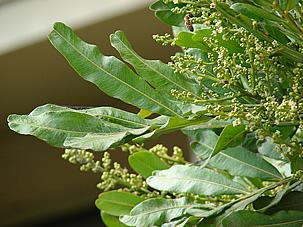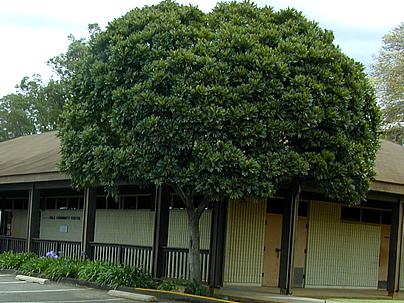The fern tree (Filicium decipiens) is a dioecious, evergreen tree with decorative foliage that resembles fern fronds, hence its popular and botanical name (Filicium = fern, decipiens = false). Native to India and Sri Lanka, it can reach up to 23 feet (7 meters) in height. Its trunk is dark, ranging from brown to gray, with irregularly scaled bark. The leaves have winged midribs and are pinnate, with shiny, sessile, glabrous leaflets with undulating margins.
They are arranged alternately and spirally along the branches, forming a dense foliage. Flowering occurs in spring and summer, producing axillary inflorescences, panicle-type, with small, yellow, and delicately scented flowers, of little ornamental importance. The subsequent fruits are ellipsoid drupes, turning purple when ripe, resembling black olives.

It is a fascinating tree for landscaping due to its tropical appeal, small size, and well-rounded, symmetrical, and densely foliated crown, providing cool shade in the summer. It can be used individually as a focal point or background for a flowering species, or in rows along paths and roads. Thus, it fits perfectly into small spaces such as residential gardens, driveways, patios, etc., and is ideal for providing privacy.
It is said to be an excellent species for hosting orchids and other epiphytic plants. Its growth is considered fast to moderate. It is also suitable for urban afforestation due to its non-aggressive roots and ornamental qualities, but attention must be paid to its not particularly strong trunk, which is subject to occasional breakage.
It should be cultivated in full sun, in well-drained soil, preferably alkaline, enriched with organic matter, and irrigated in the first year after planting. The fern tree is extremely robust, requiring minimal care once well-established. It is resistant to salinity in coastal areas and short periods of drought. However, being a typically tropical species, it does not tolerate frost or intense cold. It easily multiplies by seeds, which should be sown in autumn in a substrate kept moist for germination.


